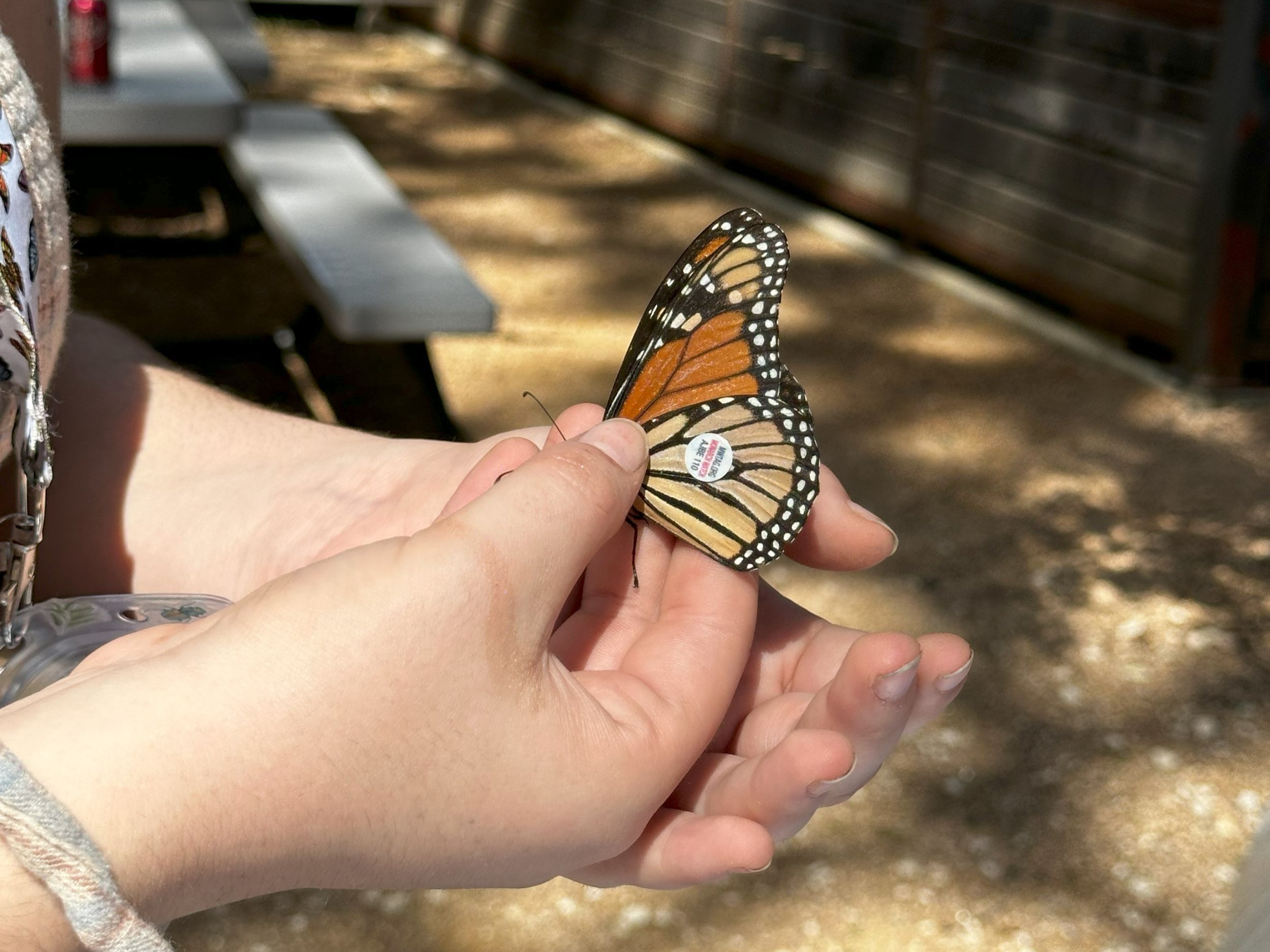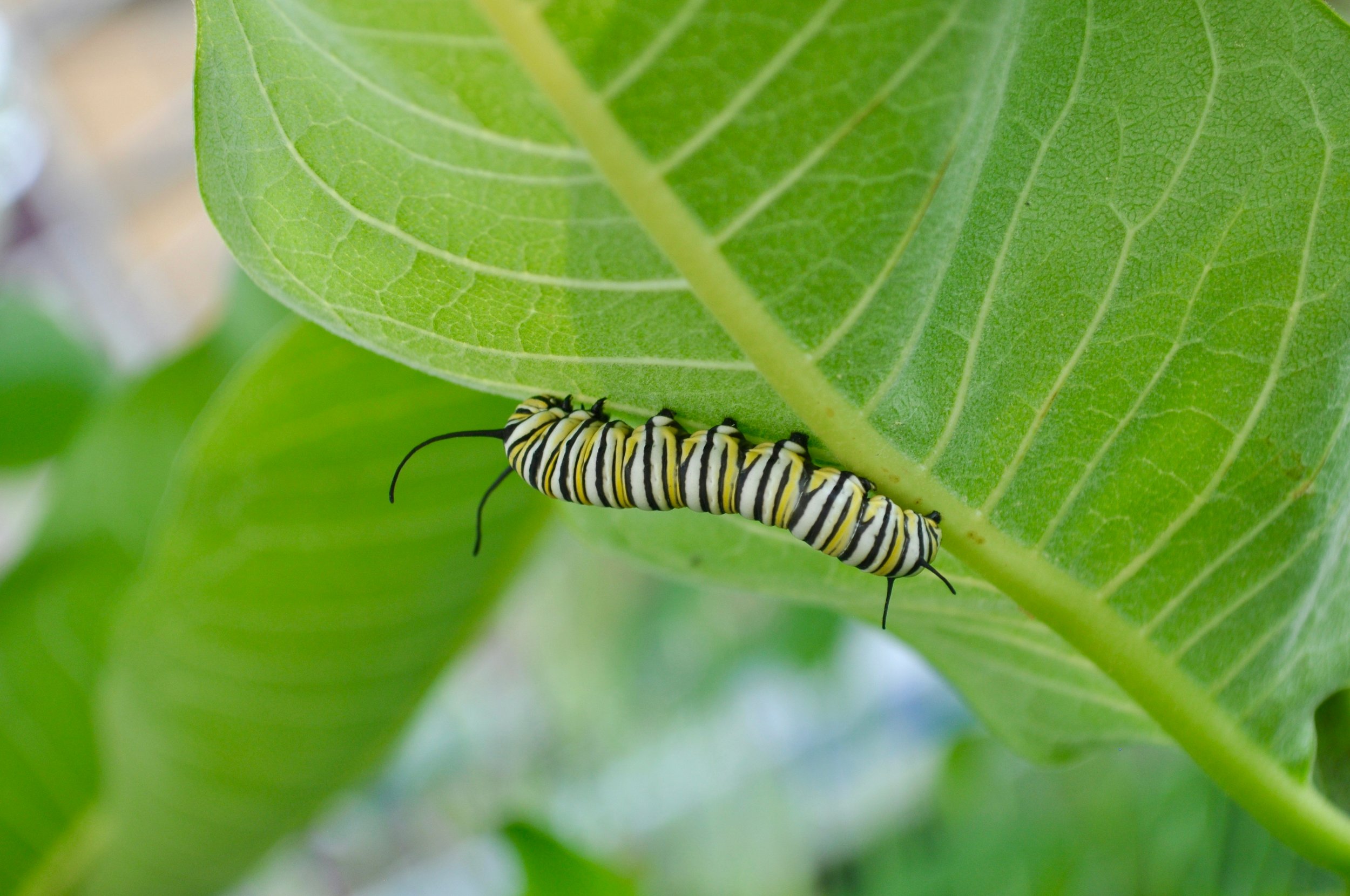They change from a wiggly caterpillar, ravenous for tender milkweed leaves, eating a foot and a half before being satiated, to a soft jade green chrysalis, then emerging as a rather large black and orange butterfly, as lovely as it is unpalatable to predators, capable of flying hundreds of miles.
The migration cycle is even more astounding when you realize that the central monarch migration is happening in a sort of grand relay which takes 4-5 generations before completion. Adults live 2-4 weeks at most in the summer, spending it mating and laying eggs on milkweed. Only one of the generations are migrating butterflies, the last of the year. They can live longer, but face many challenges on their way. Learn more about the science of the monarch life cycle at Journey North FAQ with Dr. Karen Oberhauser.
What can you do to help?
Plant a Pollinator Garden!
If you plant it, they will come. The butterflies that is! Butterflies, bees, flies and many beetles all love nectar. We can plant milkweeds that are native to our region, plus nectar plants for the adult butterflies to rest and refuel on their long journey. Planting a wide variety of other native perennial flowers will serve as a food source for monarchs and other important pollinators. In Texas, we have over 800 native bee species alone!
Native flowering perennials are hardy plants that are often drought resistant, and come back every year, easily supporting the ecosystem of your backyard. See the Xerces Society guide on what nectar plants are the most impactful for Monarch butterflies in your region. Another option is to plant a mixed seed garden meant for your ecoregion. A Southern Plains pocket prairie is great for most of Texas. Native American Seed, based in Llano, is a great resource for inspiration, quality guides and instructions, plus pesticide free seeds just right for your region’s pollinators. We recommend the Pollinators Essentials or many other highly specific seed blends.
Avoid pesticides
Monarch caterpillars feed specifically on Asclepias leaves, which are found wild and generally uncontaminated by pesticides. (If rearing monarchs, do not feed from sources that may be sprayed.) Flowering nectar plants sold in many large operation nurseries may have had broad spectrum pesticides applied to them, and are not always safe as a nectar source for adult butterflies. Talking to the people at your local nursery is a great idea. Ask them if they use neonicotinoids and similar systemic insecticides. Let them know you would love to see some pesticide free native plants in the nursery. See this page for more ideas.
Check this database to find a resource near you!
Remove your tropical milkweed
Through research and observation,it is now known that the tropical milkweed (Asclepias curassavica) should not be planted in temperate areas where it does not die back in winter. It can grow later in the season than native milkweed, confusing adults into breeding and laying eggs instead of migrating. These eggs will not survive the winter. In addition, tropical milkweed has been suspected of furthering the spread of a protozoan parasite of monarch’s called Ophryocystis elektroscirrha, or OE. Normally, native milkweeds die back after blooming and the parasite dies along with them so that each summer’s monarch population feeds on fresh, parasite-free foliage.
Participate in Community Science or Community Projects
A great way to help monarchs and other ecologically important species is to get involved in Community or Citizen Science projects. Reporting sightings of monarch butterflies on Journey North or iNaturalist is easy and helps us learn more about Monarch populations.
You could also consider planting a local community garden with a pollinator focus or create a seed sharing network with your neighbors. You could talk to your neighborhood about leaving the wildflowers during peak season, and avoiding pesticides in landscaping areas.
Some Monarch specific online community science projects can also be found on Monarch Watch. You can participate by tagging monarchs, reporting monarch sightings to help with population estimates, or get serious and become a trained participant in the Monarch Larva Monitoring Project.











